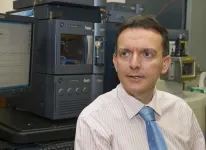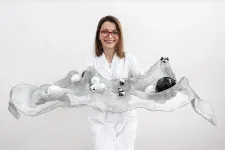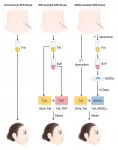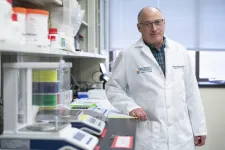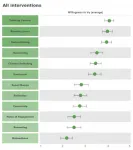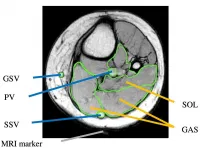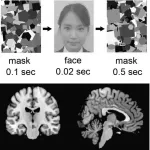Corals go hungry long before they bleach
2021-04-19
(Press-News.org) The results of coral beaching are obvious -- stark underwater forests of white coral skeletons -- yet the physiological processes of bleaching are not well understood. Now, KAUST researchers show that, long before signs of bleaching appear, prolonged spells of warm water cause heat stress that disrupts the nutrient cycling of the coral and its symbiotic algae.
Coral reefs occur in warm low-nutrient waters. Stony corals include the coral animal, which is a cnidarian host that lives in symbiosis with Symbiodiniaceae, single-celled algae that photosynthesize to help "feed" the coral in exchange for the protection of the coral tissue. During a bleaching event, the algae are expelled by the coral, which may lead to the coral's starvation and death. Current thinking, explains Nils Rädecker, a former Ph.D. student at KAUST and now at the École Polytechnique Fédérale de Lausanne (EPFL), "was that this starvation was the result of the corals losing the algae as their main source of energy." However, a few signals suggested that it is not as simple as that.
To investigate, the research team transported five colonies of a cauliflower coral (Stylophora pistillata) from Abu Shosha reef in the Red Sea to KAUST's aquarium tanks, which were set up to closely mimic reef conditions. Once acclimatized, the corals were subjected to heat stress conditions that matched local maximum summer temperatures in 2017.
The research team showed that the stable coral-algal symbiosis relies on the algae remaining nitrogen-limited as it "ensures the algae transfer photosynthetic carbon as sugars to the coral host instead of investing it in their own growth," explains Rädecker. "However, during heat stress the corals consume their own energy reserves (amino acids) and release waste ammonium that, in turn, stimulates algal symbiont growth."
This sets up a new cycle. "This metabolic imbalance destabilizes the symbiotic nutrient cycling: as the algal symbionts grow, they translocate less carbon to their coral host," says Rädecker. "Then, because the coral host receives less carbon from its algae, it releases ammonium, thereby stimulating algal growth." The expulsion of the algae during bleaching is not the cause of coral stress, says Nils, but rather "bleaching is a symptom of a disturbed symbiosis, in which the algae no longer provide food to their coral host," he says.
Current management strategies focus on quantifying the severity of bleaching, but these new results suggest an alternative focus. "Regular monitoring of the nutritional status of corals could help to detect long-term trends in the response of corals to changing environmental conditions and to anticipate problems before reefs are bleaching," explains Rädecker.
These findings also emphasize broad benefits "from identifying reefs that are vulnerable to bleaching and implementing appropriate countermeasures, rather than having to 'rescue' them once bleached," says Christian Voolstra, formerly of KAUST and now at the University of Konstanz in Germany. "Our study shows that controlling the water quality, such as nitrate levels, in the environment could help repress destabilizing the metabolic feedback loop when reef water temperatures go up."
INFORMATION:
[Attachments] See images for this press release:
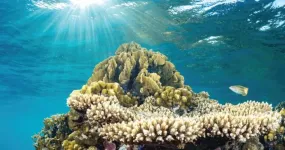
ELSE PRESS RELEASES FROM THIS DATE:
2021-04-19
Varying severity of COVID-19 symptoms in patients is reflected by levels of a chemical biomarker in their body which scientists say could be used to better manage treatments and other interventions, including vaccinations.
In a new paper in International Journal of Infectious Diseases, medical experts in Italy and Australia examined levels of a chemical called serum amyloid A (SAA), a protein synthesised in the liver which can spike up to 1,000-fold within the first 24-48 hours of an infection.
In turn, an increase in SAA can further perpetuate inflammation and cause clot abnormalities and organ damage, researchers say, concluding SAA levels are associated ...
2021-04-19
Solid-matrix catalysts called heterogeneous catalysts are among the most widespread industrial applications in reducing toxic gases, unburned fuel, and particulate matter in the exhaust stream from the combustion chamber. They are also used in energy, chemical, and pharmaceutical sectors, i.e., production of biodiesel, polymers, biomass/waste conversion into valuable products, and many others processes. All thanks to their active sites and high surface. Nevertheless, their high efficiency is limited by the astronomic price of noble metals, So, cost-effective substitutes with comparable effectivity seem to be a holy grail for the industry. A recent paper ...
2021-04-19
OSAKA, Japan. Look at any piece of machinery and you will see a complex network of moving parts, or actuators, each with its own function, all working together for a common goal. From this perspective, the way most machines differ is in the way their actuators are powered: excavators rely on compressed liquid (hydraulic), the brake system in a car uses compressed air (pneumatic), and a printer has electricity.
What if the moving parts of a machine could be powered by light? A machine made up of photoactuators would not need direct contact with the power source to move. Among its many ...
2021-04-19
Durham, NC - A study released today in STEM CELLS Translational Medicine suggests a new way to correct facial atrophy of localized scleroderma (LoS) in patients. It shows how applying grafts made up of the patient's own fat enhanced with adipose?derived stem cells (ADSCs) is a safe, feasible and attractive alternative to conventional fat grafting or fat grafting combined with stromal vascular fraction in treating this condition.
LoS is a rare autoimmune disease caused when the body makes too much collagen, which results in the skin becoming stiff and hard. "Presenting mainly as subcutaneous tissue atrophy and hyperpigmentation, this disorder seriously ...
2021-04-19
A COVID-19 vaccine that could provide protection against existing and future strains of the COVID-19 coronavirus, and other coronaviruses, and cost about $1 a dose has shown promising results in early animal testing.
Vaccines created by UVA Health's Steven L. Zeichner, MD, PhD, and Virginia Tech's Xiang-Jin Meng, MD, PhD, prevented pigs from being becoming ill with a pig model coronavirus, porcine epidemic diarrhea virus (PEDV). The vaccine was developed using an innovative approach that Zeichner says might one day open the door to a universal vaccine for coronaviruses, ...
2021-04-19
A new study from the UBC Sauder School of Business finds a subtle shift in organ donor messaging can lead to a big boost in registration.
Organ donation saves countless lives every year, and most people think it's the right thing to do -- but when it comes to people actually registering to donate, the numbers around the world are surprisingly low. This is particularly so in countries that rely on informed consent and require people to learn about organ donation before they opt-in to register as a donor.
In fact, in Canada, just 32 per cent of people have registered to become organ donors.
Transplant agencies have tried a range of strategies to increase donation levels, including the introduction of in-hospital organ donation coordinators, greater public ...
2021-04-19
A forest looks like a hotbed of randomness, with trees and plants scattered in wild and capricious diversity. But appearances can be deceiving, say a trio of complexity researchers at the Santa Fe Institute (SFI). Underneath that apparent messiness lurk extraordinary regularities, governed by the biological mechanisms that drive universal forces of growth, death, and competition.
In a paper published April 9 in the journal PNAS, the SFI group, led by Program Postdoctoral Fellow and now Complexity Science Hub Vienna Postdoctoral Scientist Eddie Lee, describes a new framework that can reproduce those spatial and temporal patterns that emerge in places and ...
2021-04-19
The internet seems like the place to go to get into fights. Whether they're with a family member or a complete stranger, these arguments have the potential to destroy important relationships and consume a lot of emotional energy.
Researchers at the University of Washington worked with almost 260 people to understand these disagreements and to develop potential design interventions that could make these discussions more productive and centered around relationship-building. The team published these findings this April in the latest issue of the Proceedings of the ACM in Human Computer Interaction Computer-Supported Cooperative Work.
"Despite the fact that online spaces are often described as toxic and polarizing, ...
2021-04-19
Chronic lower-limb edema (CLE) -- the permanent accumulation of fluid in the leg -- often occurs in elderly people. The condition leads to various physical and mental problems, including difficulty in walking or moving, fatigue and anxiety. One cause of CLE is the lack of physical activity, which is associated with a decrease in muscle pump action. The latter refers to the leg muscle's acting as a blood pump: when contracted, the muscle squeezes veins together, forcing blood to flow. The question whether muscle pump action systematically changes with age has not been thoroughly investigated; now, Junko Sugama from Kanazawa University and colleagues have addressed this issue. In addition, they studied how leg posture affects muscle pump action.
For their study, Sugama ...
2021-04-19
Osaka, Japan - As humans, we each have a powerful ability to easily recognize our own face. But now, researchers from Japan have uncovered new information about how our cognitive systems enable us to distinguish our own face from those of others, even when the information is presented subliminally.
In a study published this month in Cerebral Cortex, researchers from Osaka University have revealed that a central element of the dopamine reward pathway in the brain was activated when participants were subliminally shown images of their face. This provides new clues regarding the underlying processes of the brain involved in self-facial recognition.
When we are ...
LAST 30 PRESS RELEASES:
[Press-News.org] Corals go hungry long before they bleach

